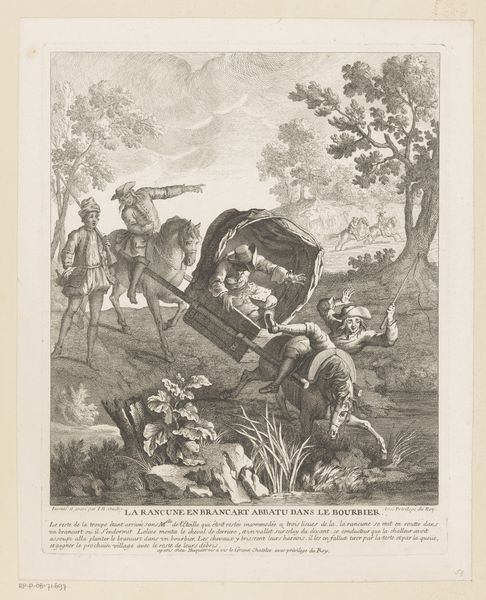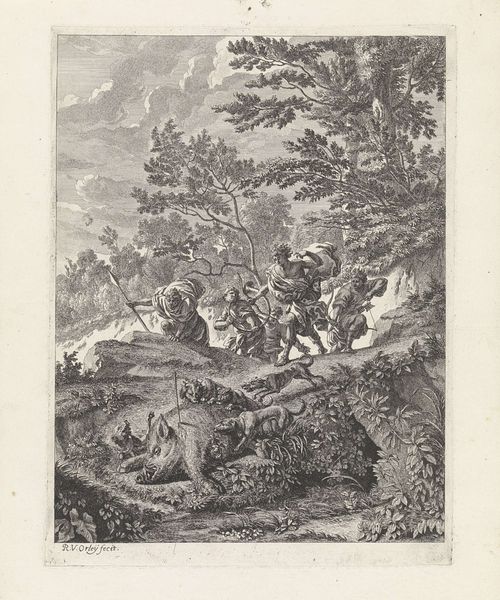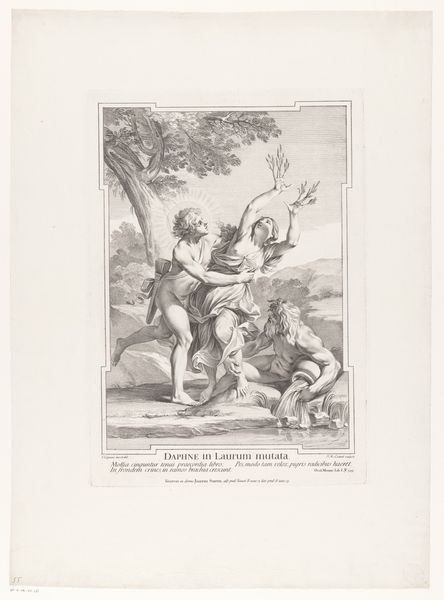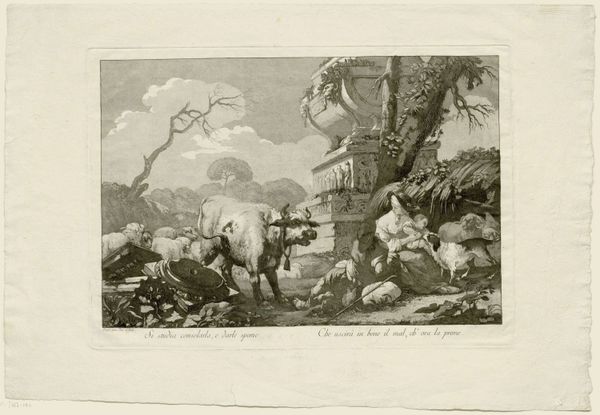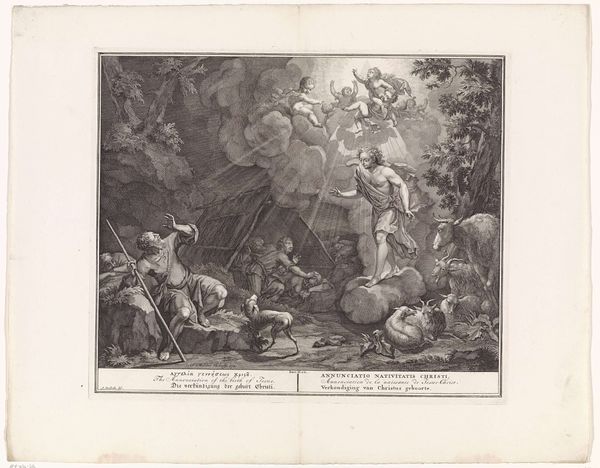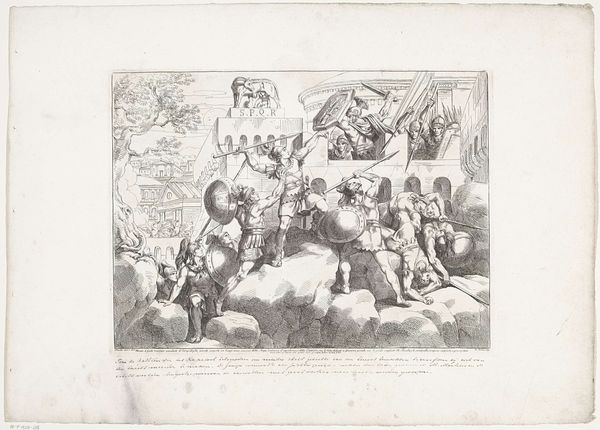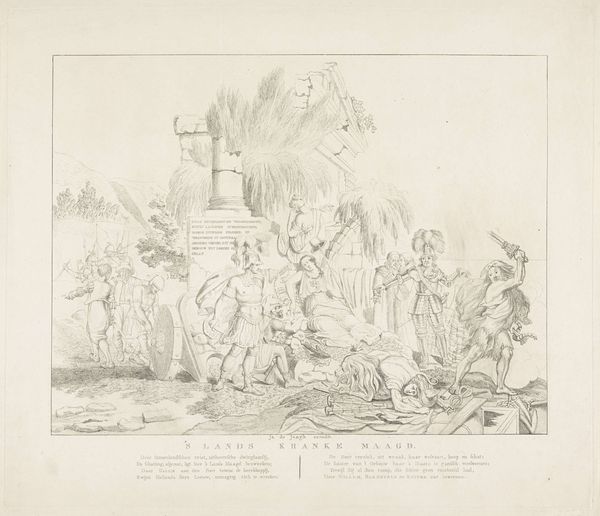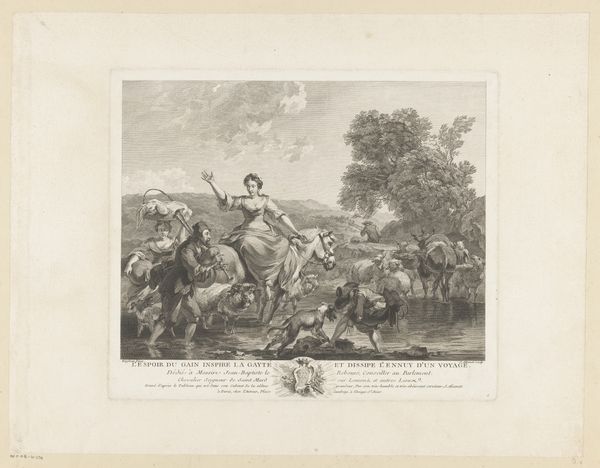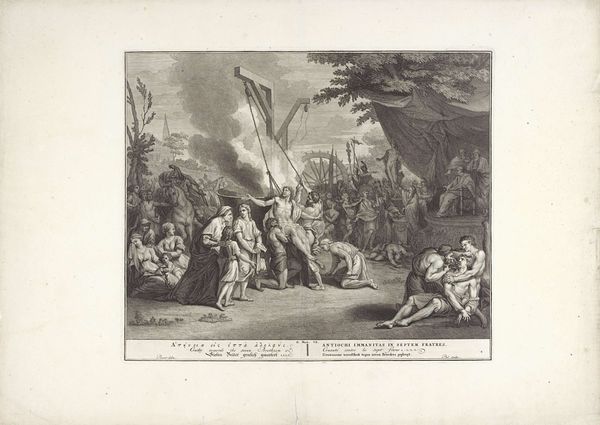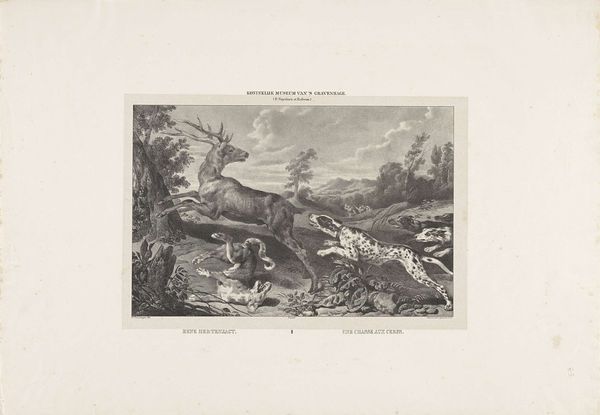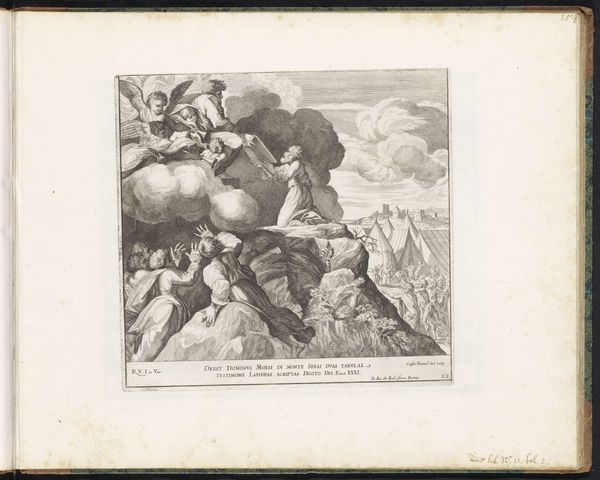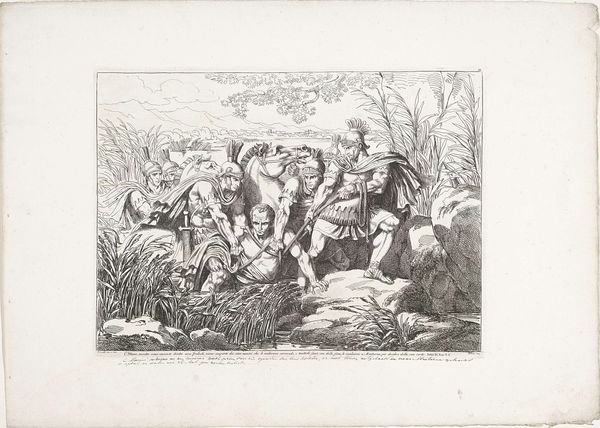
Dimensions: height 290 mm, width 200 mm
Copyright: Rijks Museum: Open Domain
Giovanni Cattini made this print, “Scene from Tasso’s ‘La Gerusalemme Liberata’”, sometime in the 1700s, using etching. Look closely, and you can see the quality of the etched line, which varies subtly from thick to thin, dark to light. This gives the print its atmospheric quality. Etching is an indirect process. The artist covers a metal plate with a waxy ground, draws through the ground with a needle, then immerses the plate in acid, which bites into the metal only where the drawing has exposed it. The plate is then inked and printed. The appeal of etching in the 18th century was that, unlike engraving, it allowed for a relatively spontaneous, painterly line. So, while the scene here is one of high drama, the fine lines used to depict it suggest a more personal, intimate experience. Through such techniques, printmakers like Cattini found ways to bring craft and fine art together, engaging with the themes of labor, politics, and consumption prevalent in their time.
Comments
No comments
Be the first to comment and join the conversation on the ultimate creative platform.
